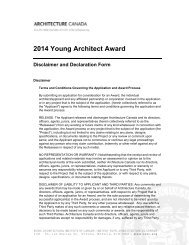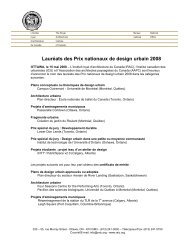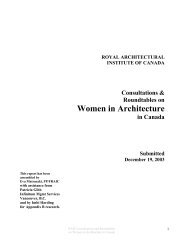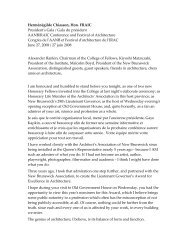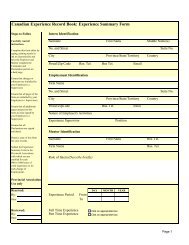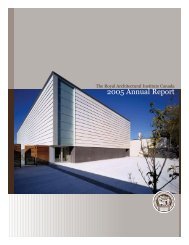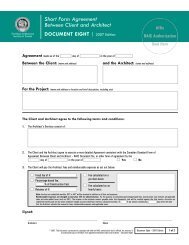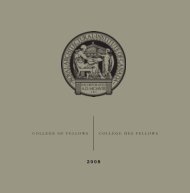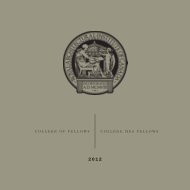Benchmark Study on Green Buildings - Royal Architectural Institute ...
Benchmark Study on Green Buildings - Royal Architectural Institute ...
Benchmark Study on Green Buildings - Royal Architectural Institute ...
Create successful ePaper yourself
Turn your PDF publications into a flip-book with our unique Google optimized e-Paper software.
took place in 1998 and 1999 together with the new residents. In the summer of 1999, the<br />
City of Freiburg began the sale of properties in the sec<strong>on</strong>d development secti<strong>on</strong>. The<br />
building process there started late summer 2000. In the year 2001 the first development<br />
secti<strong>on</strong> of the new district was completed, and 2000 people moved in. When completed in<br />
2006, Vauban was already a vibrant community which was prospering due to the shared<br />
envir<strong>on</strong>mental c<strong>on</strong>cern of its inhabitants.<br />
Vauban has set its own high standards for envir<strong>on</strong>mental performance. Vauban buildings<br />
have a compulsory low-energy standard, where all new buildings are built to use 65<br />
kWh/m 2 a or less, with the average energy standard for new German houses built between<br />
1995 and 2000 being about 100 kWh/m 2 a and the standard of older houses about 200<br />
kWh/m 2 a. This is a huge decrease in energy use. Additi<strong>on</strong>ally, about 100 houses have<br />
been built to the passive house standard (15kWh/m 2 a). ‘Passive Houses’ do not need<br />
c<strong>on</strong>venti<strong>on</strong>al heating systems: their heat requirements are almost entirely covered using<br />
solar power generati<strong>on</strong>, heat recuperati<strong>on</strong> systems, and southern-facing windows which<br />
allow maximum penetrati<strong>on</strong> from the sun’s rays. However, several ‘Improved Passive<br />
Houses’ (plus energy houses) have also been built in Vauban by an investor. These<br />
houses produce more energy than they need, and represent the cutting edge of energy<br />
efficiency. The investor hopes to build between 100 and 200 more of these houses in the<br />
Vauban area. The Vauban development plan also includes some regulati<strong>on</strong>s for the<br />
design of the houses: for example, ‘single houses’ are prohibited which leads to a<br />
compact urban building structure and the characteristic mixed land-use. Finally, as the<br />
whole settlement can not depend solely <strong>on</strong> solar power for all its energy needs, a highefficiency<br />
power plant operating <strong>on</strong> wood-chips has been built and c<strong>on</strong>nected to district’s<br />
power grid.<br />
As transportati<strong>on</strong> is <strong>on</strong>e of modern society’s largest c<strong>on</strong>sumers of fossil fuel and<br />
producers of greenhouses gases, Vauban has tried to minimize the use of pers<strong>on</strong>al<br />
motorized vehicles in their settlement. It has d<strong>on</strong>e this through two approaches, “car-free”<br />
and “parking-free” living. Cars are <strong>on</strong>ly permitted in the district for pick-up and delivery<br />
purposes, and must be parked in <strong>on</strong>e of the community car parks <strong>on</strong> the outskirts of the<br />
development as Vauban prohibits the building of parking space <strong>on</strong> private property. Only<br />
families who own cars must pay for parking space in the car parks. Car owners must walk<br />
a short distance to reach their vehicles, which means travel within Vauban is typically not<br />
d<strong>on</strong>e using a car as it would take more time to get to the car, drive to another car park,<br />
and park there compared to simply walking or cycling to the destinati<strong>on</strong>. The speed limit<br />
<strong>on</strong> the district’s main road is 30km/h, and in the residential areas cars are not supposed to<br />
drive faster than “walking speed,” which is about 5km/h. By planning Vauban to be<br />
predominantly car-free, it has been designed and built to be a district of short distances,<br />
wherein most daily destinati<strong>on</strong>s (such as businesses, shops, schools, and recreati<strong>on</strong> areas)<br />
are all within walking or cycling distance. Car-sharing initiatives have also sprung up in<br />
Vauban, where the vehicle is parked in <strong>on</strong>e of the car parks, and where costs are divided<br />
between participants based <strong>on</strong> how often they use the vehicle. Public transportati<strong>on</strong> to<br />
Freiburg exists in the form of two buslines and a tramway.<br />
79



